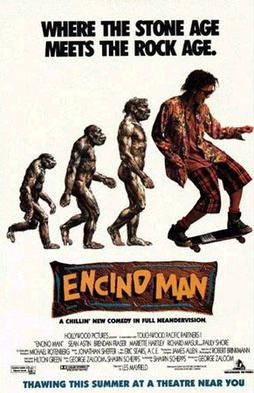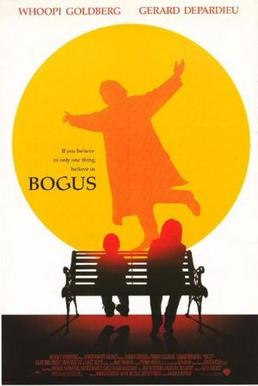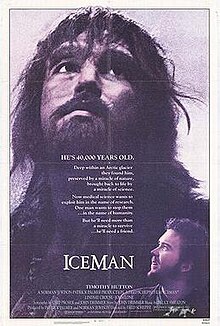
Harlan Jay Ellison was an American writer, known for his prolific and influential work in New Wave speculative fiction and for his outspoken, combative personality. His published works include more than 1,700 short stories, novellas, screenplays, comic book scripts, teleplays, essays, and a wide range of criticism covering literature, film, television, and print media.

The Thing from Another World, sometimes referred to as just The Thing, is a 1951 American black-and-white science fiction-horror film directed by Christian Nyby, produced by Edward Lasker for Howard Hawks' Winchester Pictures Corporation, and released by RKO Radio Pictures. The film stars Margaret Sheridan, Kenneth Tobey, Robert Cornthwaite, and Douglas Spencer. James Arness plays The Thing. The Thing from Another World is based on the 1938 novella "Who Goes There?" by John W. Campbell.

The Day After Tomorrow is a 2004 American science fiction disaster film conceived, co-written, co-produced, and directed by Roland Emmerich, based on the 1999 book The Coming Global Superstorm by Art Bell and Whitley Strieber, and starring Dennis Quaid, Jake Gyllenhaal, Sela Ward, Emmy Rossum, and Ian Holm. The film depicts catastrophic climatic effects following the disruption of the North Atlantic Ocean circulation, in which a series of extreme weather events usher in climate change and lead to a new ice age.

Caveman is a 1981 slapstick comedy film written and directed by Carl Gottlieb and starring Ringo Starr, Dennis Quaid, Shelley Long and Barbara Bach. The film is set in prehistoric times and revolves around the rivalries between cavemen.
"'Repent, Harlequin!' Said the Ticktockman" is a dystopian science fiction short story by American writer Harlan Ellison that was published in 1965. First appearing in the science fiction magazine Galaxy in December 1965, it won the 1965 Nebula Award, the 1966 Hugo Award, and the 2015 Prometheus Hall of Fame Award.

Encino Man is a 1992 American comedy film directed by Les Mayfield in his directorial debut. The film stars Sean Astin, with a supporting cast of Brendan Fraser, Mariette Hartley, Richard Masur, Pauly Shore, Megan Ward, Robin Tunney, Michael DeLuise, and Jonathan Ke Quan in his last American feature film until 2021. In the film, two teenagers discover and thaw a frozen caveman, who has to adjust to 20th-century society while teaching them life lessons of his own.

Bogus is a 1996 American urban fantasy drama film directed by Norman Jewison from a screenplay written by Alvin Sargent, and starring Whoopi Goldberg, Gérard Depardieu, and Haley Joel Osment.
"Prehistoric Ice Man" is the eighteenth and final episode of the second season of the American animated television series South Park. The 31st episode of the series overall, it originally aired on Comedy Central in the United States on January 20, 1999. The episode was written by series co-creator Trey Parker, along with Nancy M. Pimental, and directed by Eric Stough.
Keyrock, known as "The Unfrozen Caveman Lawyer", was a recurring character created by Jack Handey and played by Phil Hartman on Saturday Night Live from 1991 through 1996. He was a caveman with the beetle brows of a Neanderthal who had fallen into a glacial crevasse, or "Big Giant Hole in Ice", during the Ice Age, thus preserving his body well enough for scientists to thaw him out in 1988. He subsequently studied law at the Oklahoma City University School of Law. The character exploits his humble origins with thinly-veiled cynicism in order to manipulate others.
John Terry is an American retired film, television, and stage actor. He is perhaps best known for his role as Christian Shephard in the TV series Lost, as Larry McCoy in the TV series Las Vegas and for portraying Slim in Of Mice and Men (1992). His daughter is professional association football player Hanna Terry.

Cro is an American animated television series produced by the Children's Television Workshop and Film Roman. It was partially funded by the National Science Foundation. Every episode has an educational theme, introducing basic concepts of physics, mechanical engineering, and technology. The show's narrator is an orange woolly mammoth named Phil, who was found frozen in ice by a scientist named Dr. C and her assistant, Mike. After they defrost him, Phil tells both of them about life in the Ice Age, including stories about his friend Cro, a Cro-Magnon boy.

The Gods Must Be Crazy II is a 1989 comedy film written and directed by Jamie Uys, and a sequel to the 1980 film The Gods Must Be Crazy, which Uys also wrote and directed. An international co-production between South Africa, Botswana and the United States, it was produced by the Weintraub Entertainment Group and released by 20th Century Fox on 13 October 1989. In the United States, it was released by Columbia Pictures on 13 April 1990.

Down in the Valley is a 2005 American neo-western drama film starring Edward Norton, Evan Rachel Wood, David Morse and Rory Culkin. The film made its debut in the Un Certain Regard section at the 2005 Cannes Film Festival on May 13, and made its limited theatrical release in North America on May 5, 2006.

Lipstick is a 1976 American rape and revenge thriller film directed by Lamont Johnson and starring Margaux Hemingway, Chris Sarandon, Perry King, and Anne Bancroft. Mariel Hemingway also has a supporting role as Margaux's onscreen sister. The film follows a fashion model who is raped by her teenage sister's music teacher. Upon his acquittal in court, he rapes her sister, leading her to enact a brutal revenge.
John Drimmer is a psychologist as well as Founder/ Chief Trailblazer of HerosJourneyInteractive.com, the first interactive and self-guided version of the Hero's Journey. Before becoming a psychologist, he was a producer at 60 Minutes and the creator of many TV series and films.

In Time is a 2011 American science fiction action film written, produced, and directed by Andrew Niccol. Justin Timberlake and Amanda Seyfried star as inhabitants of a society that uses time from one's lifespan as its primary currency, with each individual possessing a clock on their arm that counts down how long they have to live. Cillian Murphy, Vincent Kartheiser, Olivia Wilde, Matt Bomer, Johnny Galecki, and Alex Pettyfer also star. The film was released on October 28, 2011, and grossed $174 million against a $40 million budget. It received mixed reviews from critics, who praised the premise while criticising the execution.

"The Gnarly Man" is a science fiction story by American writer L. Sprague de Camp, about an apparently immortal Neanderthal Man surviving into the present day.

A Boy and His Dog is a 1975 American black comedy science fiction film directed by actor L. Q. Jones, from a screenplay by Jones based on the 1969 novella of the same title by fantasy author Harlan Ellison. The film stars Don Johnson, Susanne Benton, Alvy Moore, and Jason Robards. It was independently produced and distributed by Jones' company LQ/Jaf Productions. The film's storyline concerns a teenage boy, Vic, and his telepathic dog, Blood, who work together as a team in order to survive in the dangerous post-apocalyptic wasteland of the Southwestern United States. Shout! Factory released the film on DVD and Blu-ray in August 2013.
This is a list of works by Harlan Ellison (1934–2018). It includes his literary output, screenplays and teleplays, voiceover work, and other fields of endeavor.













